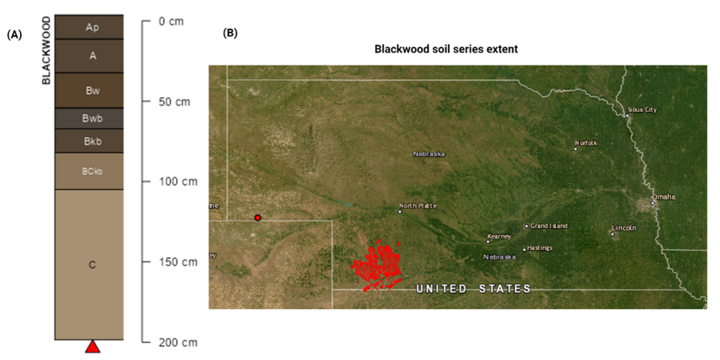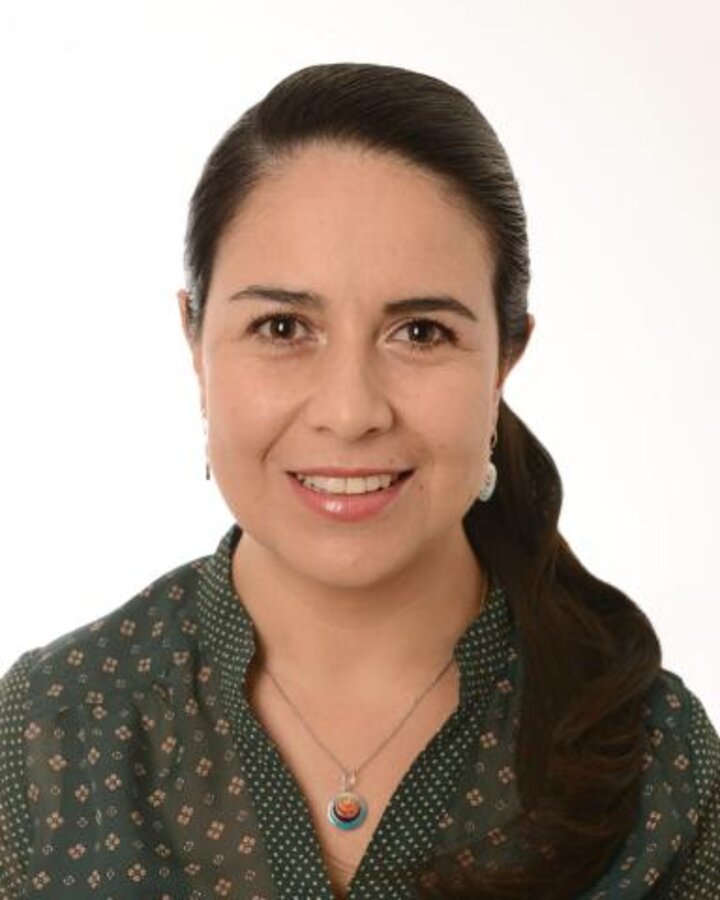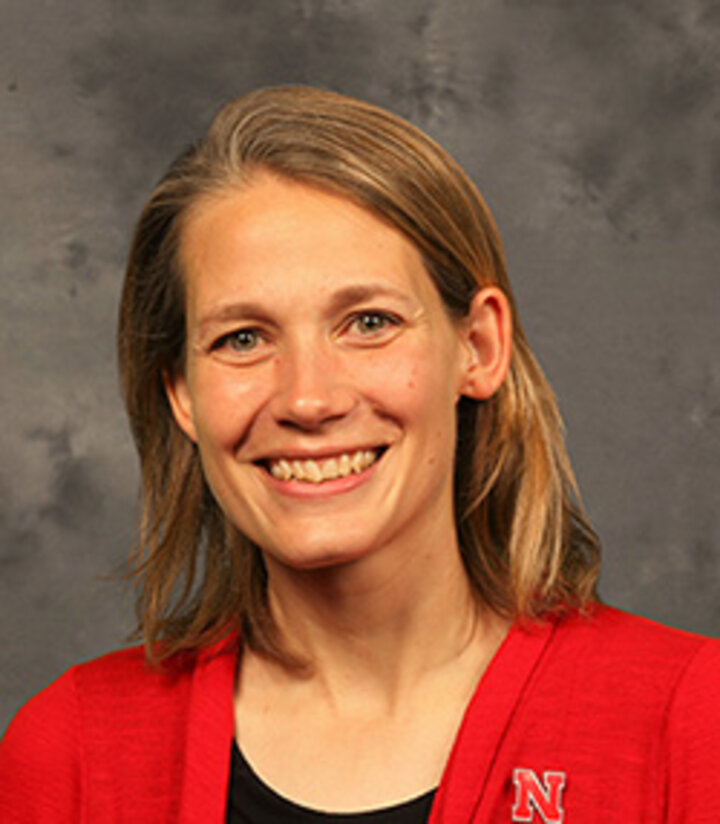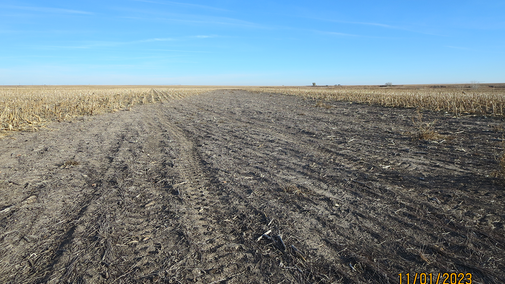The Soil Health Exchange is a new online forum from CropWatch, designed to give producers and ag industry stakeholders the opportunity to speak directly to experts about their questions and concerns regarding soil health topics.
Below, our team of soil health specialists address recent questions from the public.
Question:
"I farm with my dad in southwest Nebraska in Hayes County. We farm roughly 3,000 acres, all of which is dryland. We produce wheat, corn and grain sorghum. We have one field in particular that has us stumped. The field is 99 acres. Its soil type is Blackwood silt loam. We had terraces built on this field in 2010. Prior to the terraces being built, it was consistently one of our best-yielding fields. Since the terraces were built, it has become one of our worst-yielding fields. This field was also ripped shortly after the terraces were built to try to prevent any compaction issues that may have resulted from the construction of the terraces. None of the fertility programs we have tried seem to remedy the problem. Any insight into the causation of this problem, or any solutions you might be aware of would be greatly appreciated. Thank you."
- Summary
- This discussion addresses the concern raised by a producer farming in Hayes County, southwest Nebraska, who has observed a significant yield decline in a 99-acre field post-terrace construction.
- Location: Hayes County, southwest Nebraska
- Farm Size: Approximately 3,000 acres of dryland farming
- Crops: Wheat, corn and grain sorghum
- Problem Field: 99 acres with Blackwood silt loam soil
- Changes: Decline in yield after terraces built in 2010
- Interventions: Ripping post-terrace construction, various fertility programs tried
- Data Provided: Aerial image, soil type details, exact latitude and longitude (not provided here for identification anonymity)
- Terrace Type: Flat channel terrace
- Problem Identified by Survey: Water infiltration
Answer:
- Terrace Design: Level (Flat Channel) Terrace
- Blackwood Silt Loam Soil Profile and Distribution
- Probable Challenges/Problems
Level terraces, also known as flat channel terraces, are ideally suited for regions with arid to semi-arid climates and gentle slopes not exceeding 4%. This design includes a terraced slope, a level channel for water capture, and a supporting ridge. The dimensions of the channel are critical; it must be wide and deep enough to manage the water flowing from the inclined land sections between terraces effectively. The terrace width can be as broad as half the distance between each terrace, enhancing water permeation extensively. Constructed typically with minimal to zero gradients, these terraces excel in maximizing water retention. Despite the higher initial construction costs and the need for ongoing upkeep, the significant benefits they deliver — such as improved water retention leading to higher crop yields in low-precipitation zones like western Nebraska — can justify the investment. They may also contribute to the recharging of the local aquifer, providing long-term environmental advantages.
The Blackwood series consists of very deep, well-drained, moderately permeable soils formed in loess of two geological ages separated by a paleosol on tablelands and uplands. Slopes range from 0-3%. The mean annual precipitation is about 18 inches, and the mean annual temperature is about 52°F.

- Disturbance and Loss of Topsoil: The process of constructing terraces involves moving soil, which often results in the top, fertile layer of soil being disturbed or removed. This layer is vital for plant growth as it contains the highest concentration of organic matter and nutrients. Its loss can leave the less fertile subsoil exposed, creating a challenging environment for crops that may take years to remediate naturally.
- Soil Compaction: Terracing equipment can compress the soil beneath it, creating a denser soil structure. A recent survey of the field shows excessive traffic and farm equipment use, which may be a primary cause of soil compaction. Compacted soil has fewer air pockets, which can restrict root growth and reduce the soil's ability to absorb and infiltrate water, leading to poorer crop yields and increased runoff.
- Water Management Issues: Altering the landscape with terraces changes how water flows and is retained in the soil. This can result in some areas becoming waterlogged, while others may not receive enough moisture, leading to uneven crop growth and potential water stress during dry periods.
- Nutrient Redistribution: The movement of soil during terrace building can lead to the fertile top layer being unevenly spread, with some areas losing nutrients and others gaining them. This redistribution can affect the consistency of crop growth across the field.
- Altered Microclimate: The microclimate within a field can be significantly changed by terracing, with impacts on temperature, humidity and exposure to the elements. This can affect germination, growth and the incidence of diseases and pests.
- Detailed Soil Testing: By conducting extensive soil tests for compaction (bulk density and soil penetrometer test), nutrient profile and other soil health indicators, an informed decision can be made on soil amendments, fertilizer applications, and other management practices to improve soil quality and crop yields.
- Crop Rotation and Cover Crops: Introducing a variety of crops through rotation can enhance soil structure and health. Cover crops, such as legumes, can fix nitrogen in the soil, improve organic matter content, and prevent erosion, improving the soil quality.
- Managing Compaction: Compaction can be managed by controlled traffic farming, i.e., minimizing the travel and frequency of machinery in the field. GPS technology can be used to ensure that vehicles follow the same tracks. Adopting no-till and reduced tillage as a long-term management plan can help in improving the field condition. Ripping may seem like a solution but ripping moves soil in all directions. Knowing the depth of the compacted layer helps not to rip either above or below the compacted layer, because either will just increase the thickness of the compacted layer by pushing soil against it. The tip of the subsoiler needs to be at the bottom edge of the compacted layer. Soil Health Exchange specialists recently discussed natural solutions to compaction in this article.
- Manure Application: Applying manure is a traditional and effective way to add organic material to the soil. It improves the physical structure, enhances moisture retention, promotes the growth of beneficial microorganisms, and provides a slow-release source of nutrients to crops. There are a number of studies that showed that manure application can improve the soil properties and yield in the newly constructed terrace. See this article for more information on a long-term application of manure and soil health improvement.
- Water Flow Analysis: Collaborating with agricultural engineers for a detailed analysis of how water moves through a terraced field can lead to adjustments in terrace design for better water distribution. This can prevent issues of waterlogging and insufficient irrigation, ensuring that water is available to crops when they need it most.
- Remote Sensing: Remote sensing (using drones) can be used to assess and evaluate the regions with low yield and then specific areas can be targeted for tailored fertilizer/organic amendments.
Further Reading
- Shi, X., Song, X., Zhao, G., Yang, Q., Abbott, L. K., & Li, F. (2022). Manure Application Is the Key to Improving Soil Quality of New Terraces. Sustainability, 14(22), 15166. https://doi.org/10.3390/su142215166
- Poesen, W. A., & Hooke, J. M. (1997). Erosion, flooding and channel management in Mediterranean environments of southern Europe. Progress in Physical Geography. https://doi.org/10.1177/030913339702100201
- Montgomery, D. R. (2007). "Soil erosion and agricultural sustainability." Proceedings of the National Academy of Sciences. https://www.pnas.org/doi/10.1073/pnas.0611508104
- Snapp, S. S., Swinton, S. M., Labarta, R., Mutch, D., Black, J. R., Leep, R., & Nyiraneza, J. (2005). Evaluating Cover Crops for Benefits, Costs and Performance within Cropping System Niches. Agronomy Journal, 97(1), 322-332. https://doi.org/10.2134/agronj2005.0322a
- Wortman, C.S., & Jasa, P. (1986). Revised: 2009. Management to minimize and reduce soil compaction. NebGuide G896. https://extensionpublications.unl.edu/assets/html/g896/build/g896.htm
- Dickey, EC., Hamer, T., Hay, D., and Jasa, P. (1985). Terrace Systems for Nebraska. NebGuide G85-750. https://digitalcommons.unl.edu/cgi/viewcontent.cgi?article=2340&context=extensionhist#:~:text=Terraces%20can%20reduce%20the%20soil,up%2Dand%2Ddown%20hill
See more Soil Health Exchange
Soil Health Exchange Team At A Glance
Experts for this week's forum:

Carolina Córdova
Assistant Professor and Statewide Soil Health Specialist
UNL Department of Agronomy and Horticulture

Mitiku Mamo
Water and Cropping Systems Extension Educator
Nebraska Extension

Humberto Blanco
Professor of Soil Science
UNL Department of Agronomy and Horticulture

Jenny Rees
Water and Cropping Systems Extension Educator
Nebraska Extension

Robert Klein
Professor Emeritus and Extension Cropping Systems Specialist
UNL Department of Agronomy and Horticulture

Saurav Das
Research Assistant Professor
UNL Department of Agronomy and Horticulture

